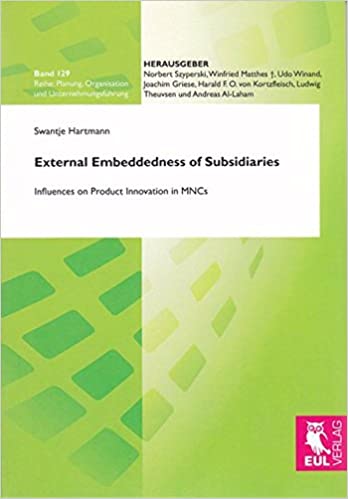Payback Period an overview
Contents:
A project costs $2Mn and yields a profit of $30,000 after depreciation of 10% but before tax of 30%. When cash flows are uniform over the useful life of the asset, then the calculation is made through the following formula. For example, if you add in the economic lives of the two machines, you could get a very different answer if the equipment lives differ by several years. So, one deficiency of payback is that it cannot factor in the useful lives of the equipment or plant it’s used to evaluate. The internal rate of return is a metric used in capital budgeting to estimate the return of potential investments.

According to payback method, the project that promises a quick recovery of initial investment is considered desirable. If the payback period of a project is shorter than or equal to the management’s maximum desired payback period, the project is accepted, otherwise rejected. For example, if a company wants to recoup the cost of a machine within 5 years of purchase, the maximum desired payback period of the company would be 5 years. The purchase of machine would be desirable if it promises a payback period of 5 years or less. In simple terms, the payback period is calculated by dividing the cost of the investment by the annual cash flow until the cumulative cash flow is positive, which is the payback year. Second, we must subtract the discounted cash flows from the initial cost figure in order to obtain the discounted payback period.
How is payback period used in project selection?
But in the case of unequal cash inflows the PB period can be found out by adding up the cash inflows until the total is equal to initial cash outlay. This is the simplest and easiest way to understand but it does not give us the real picture as it does not consider ther time value of money or the cash flows occurring after PB period. There is no clear-cut rule regarding a minimum SPP to accept the project.

The capital project could involve buying a new plant or building or buying a new or replacement piece of equipment. Most firms set a cut-off payback period, for example, three years depending on their business. In other words, in this example, if the payback comes in under three years, the firm would purchase the asset or invest in the project. If the payback took four years, it would not, because it exceeds the firm’s target of a three-year payback period.
David has helped thousands of clients improve their accounting and financial systems, create budgets, and minimize their taxes. The management of Health Supplement Inc. wants to reduce its labor cost by installing a new machine in its production process. For this purpose, two types of machines are available in the market – Machine X and Machine Y. Machine X would cost $18,000 where as Machine Y would cost $15,000. Is a simple measure of risk, as it shows how quickly money can be returned from an investment. INVESTMENT BANKING RESOURCESLearn the foundation of Investment banking, financial modeling, valuations and more. It is easy to understand as it gives a quick estimate of the time needed for the company to get back the money it has invested in the project.
Thus, it cannot tell a corporate manager or investor how the investment will perform afterward and how much value it will add in total. Knight points out that some people will use “discounted payback,” a modified method that takes into account the discount rate. This is a much less straightforward calculation , but it is “far superior,” says Knight, especially if you’re only going to use the payback method.
Internal Rate of Return (IRR)
When considering two similar capital investments, a company will be inclined to choose the one with the shortest payback period. The payback period is determined by dividing the cost of the capital investment by the projected annual cash inflows resulting from the investment. The discounted payback period is a modified version of the payback period that accounts for the time value of money. Both the payback period and the discounted payback period can be used to evaluate the profitability and feasibility of a specific project. The payback period is an evaluation method used to determine the time required for the cash flows from a project to pay back the initial investment.
This type of analysis allows firms to compare alternative investment opportunities and decide on a project that returns its investment in the shortest time if that criteria is important to them. Are uniform at $4,000 per annum, and the life of the asset acquire is 5 years, then the payback period reciprocal will be as follows. Annual Cash FlowsCash Flow is the amount of cash or cash equivalent generated & consumed by a Company over a given period.
The payback period disregards the time value of money and is determined by counting the number of years it takes to recover the funds invested. For example, if it takes five years to recover the cost of an investment, the payback period is five years. The term payback period refers to the amount of time it takes to recover the cost of an investment. Simply put, it is the length of time an investment reaches a breakeven point. The payback period method is particularly helpful to a company that is small and doesn’t have a large amount of investments in play. It is worth noting that PBP calculation uses cash flows, not the net income.
The payback period determines how long it would take a company to see enough in cash flows to recover the original investment. According to payback method, the equipment should be purchased because the payback period of the equipment is 2.5 years which is shorter than the maximum desired payback period of 4 years. which factor is given utmost importance under payback period In the case of industries where there is a high obsolescence risk like the software industry or mobile phone industry, short payback periods often become determining a factor for investments. Perhaps an even more important criticism of payback period is that it does not consider the time value of money.
Your account will automatically be charged on a monthly basis until you cancel. There is no limit on the number of subscriptions ordered under this offer. This offer cannot be combined with any other QuickBooks Online promotion or offers. For instance, in the example above, Rs 20 Lakhs invested might seem profitable today. However, such an investment made over a period of say 10 years may not hold the same value.

It helps a company to determine whether to invest in a project or not. If the discounted payback period of a project is longer than its useful life, the company should reject the project. In this case, the payback period shall be the corresponding period when cumulative cash flows are equal to the initial cash outlay. The management of a firm is failing to understand which machine to buy as both of them need an initial investment of $10,000. But, machine X generates an annual cash inflow of $1,000 for 11 years, whereas machine Y generates a cash inflow of $1,000 for 10 years.
There are several advantages to this approach, which are noted below. These capital projects start with a capital budget, which defines the project’s initial investment and its anticipated annual cash flows. The budget includes a calculation to show the estimated payback period, with the assumption that the project produces the expected cash flows each year.
PBP simply computes how fast a company will recover its cash investment. There are some clear advantages and disadvantages of payback period calculations. The payback period refers to the amount of time it takes to recover the cost of an investment or how long it takes for an investor to hit breakeven. Some companies rely heavily on payback period analysis and only consider investments for which the payback period does not exceed a specified number of years. In such situations, we will first take the difference between the year-end cash flow and the initial cost left to reduce. Next, we divide the number by the year-end cash flow in order to get the percentage of the time period left over after the project has been paid back.
The payback period is the length of time it takes to recover the cost of an investment or the length of time an investor needs to reach a breakeven point. A project with a short payback period indicates efficiency and improves the liquidity position of a company. It additionally means the project bears less risk, which is significant for small enterprises with restricted resources. A brief payback period also curtails the risk of losses caused due to changes within the economic situation. Suppose Microsoft Corporation is analyzing a project that requires an investment of $250,000.
The Structured Query Language comprises several different data types that allow it to store different types of information… Bank Rate Vs Repo Rate DifferencesThe Bank Rate is the interest rate charged by a central bank on loans and advances made to commercial banks without any security. In contrast, the Repo Rate is the rate at which the Central Bank lends money to commercial banks in case of a shortage of funds.
What is payback period in engineering?
This is inconsistent to the proposition that the theory-practice gap has narrowed in recent years. As for the non financial criteria 22.9% of the Main Board companies used such evaluation in their project assessments. This is not observed in the Second Board companies which are considered to be smaller than the Main Board companies. Under the Payback Period Method, the factor given utmost importance is the expected recovery period of the initial investment. This is the amount of time it takes for the investment to recover the initial outlay and be ‘paid back’ to the investor.
- There are several advantages to this approach, which are noted below.
- In this case, the payback period would be 4.0 years because 200,0000 divided by 50,000 is 4.
- Any business that seeks to invest its resources in a project without understanding the risks and returns involved would be held as irresponsible by its owners or shareholders.
- The Structured Query Language comprises several different data types that allow it to store different types of information…
Is one of the important responsibilities of a finance manager of a company. Discounted savings are the term within the summation sign (Σ) in Eq. The net present value shows how profitable a project will be versus alternatives and is perhaps the most effective of the three methods. Gain in-demand industry knowledge and hands-on practice that will help you stand out from the competition and become a world-class financial analyst.
Which factor is given utmost importance under payback period method?
Second, it only considers the cash inflows until the investment cash outflows are recovered; cash inflows after the payback period are not part of the analysis. Both of these weaknesses require that managers use care when applying the payback method. The payback period can be a valuable tool for analysis when used properly to determine whether a business should undertake a particular investment. https://1investing.in/ However, this method does not take into account several key factors including the time value of money, any risk involved with the investment or financing. For this reason, it is suggested that corporations use this method in conjunction with others to help make sound decisions about their investments. Despite its appeal, the payback period analysis method has some significant drawbacks.
Investopedia requires writers to use primary sources to support their work. These include white papers, government data, original reporting, and interviews with industry experts. We also reference original research from other reputable publishers where appropriate. You can learn more about the standards we follow in producing accurate, unbiased content in oureditorial policy. Yarilet Perez is an experienced multimedia journalist and fact-checker with a Master of Science in Journalism.
A hurdle rate is the minimum rate of return on a project or investment required by a manager or investor. Net present value is the difference between the present value of cash inflows and the present value of cash outflows over a period of time. Here’s a hypothetical example to show how the payback period works.
But how do you know which investments are likely to be worthwhile? There are a variety of ways to calculate a return on investment —net present value, internal rate of return, breakeven— but the simplest is payback period. Let us see an example of how to calculate the payback period when cash flows are uniform over using the full life of the asset. Even with the more advanced methods available, management may choose to rely on this tried and true method for the sake of efficiency.
